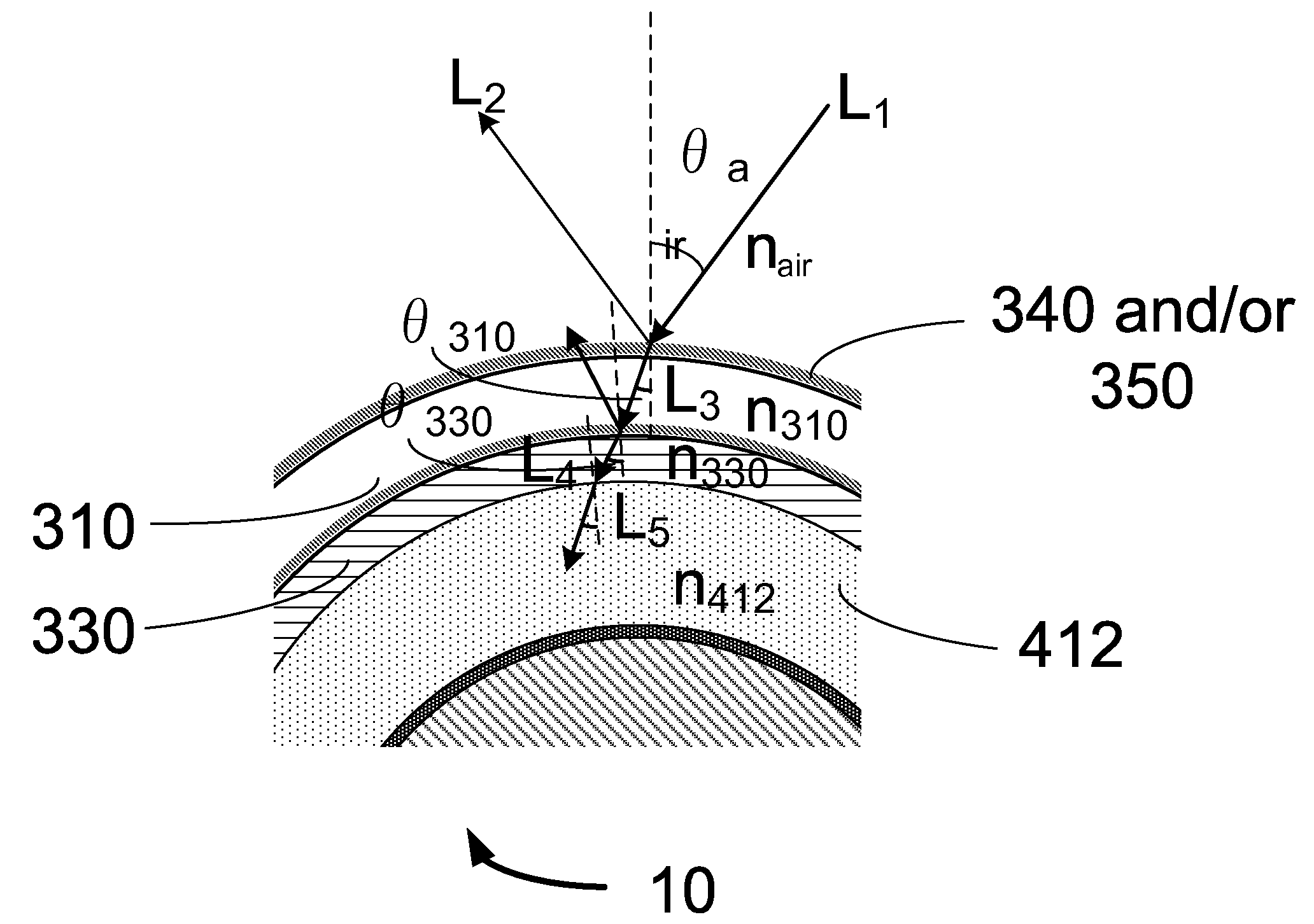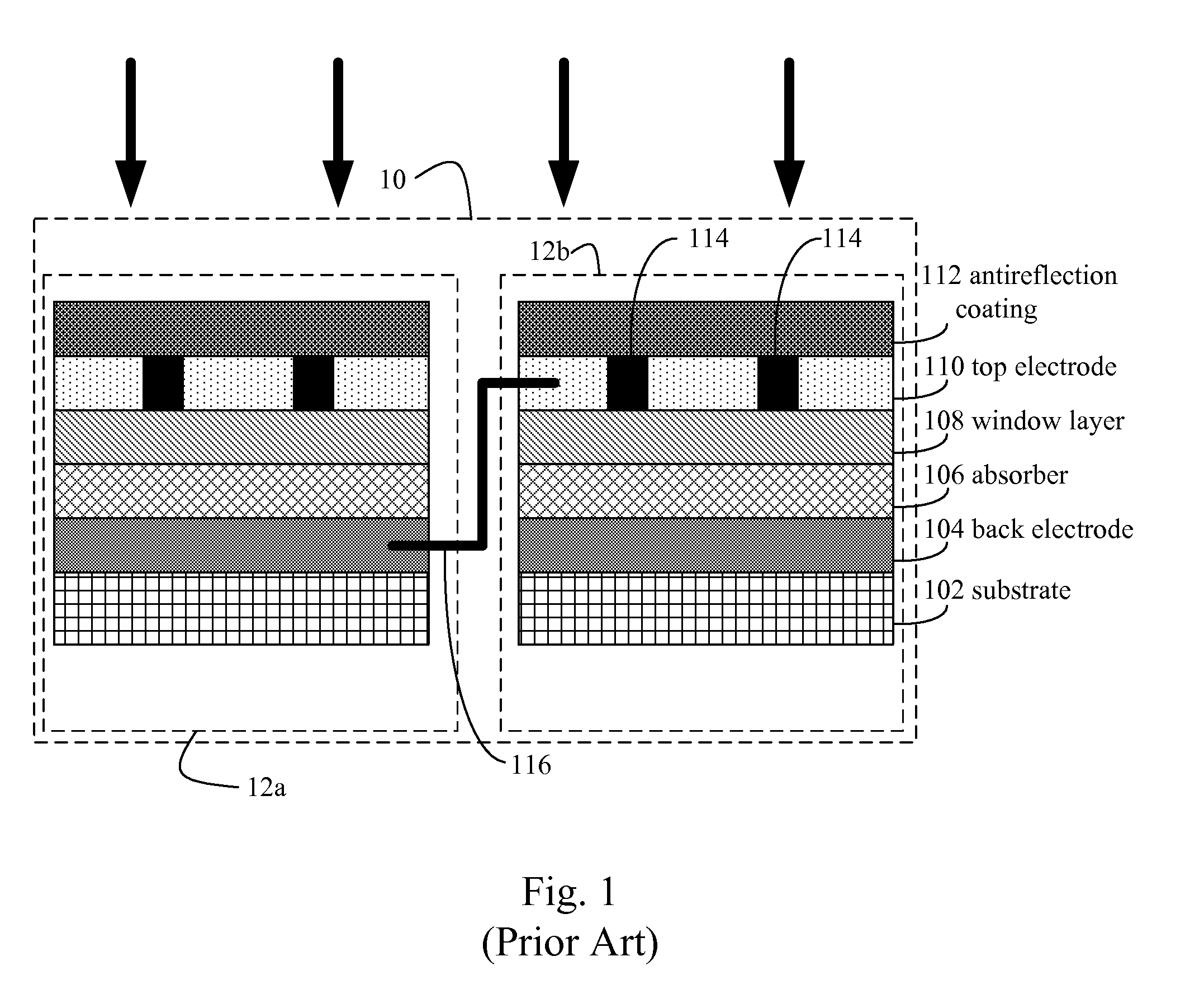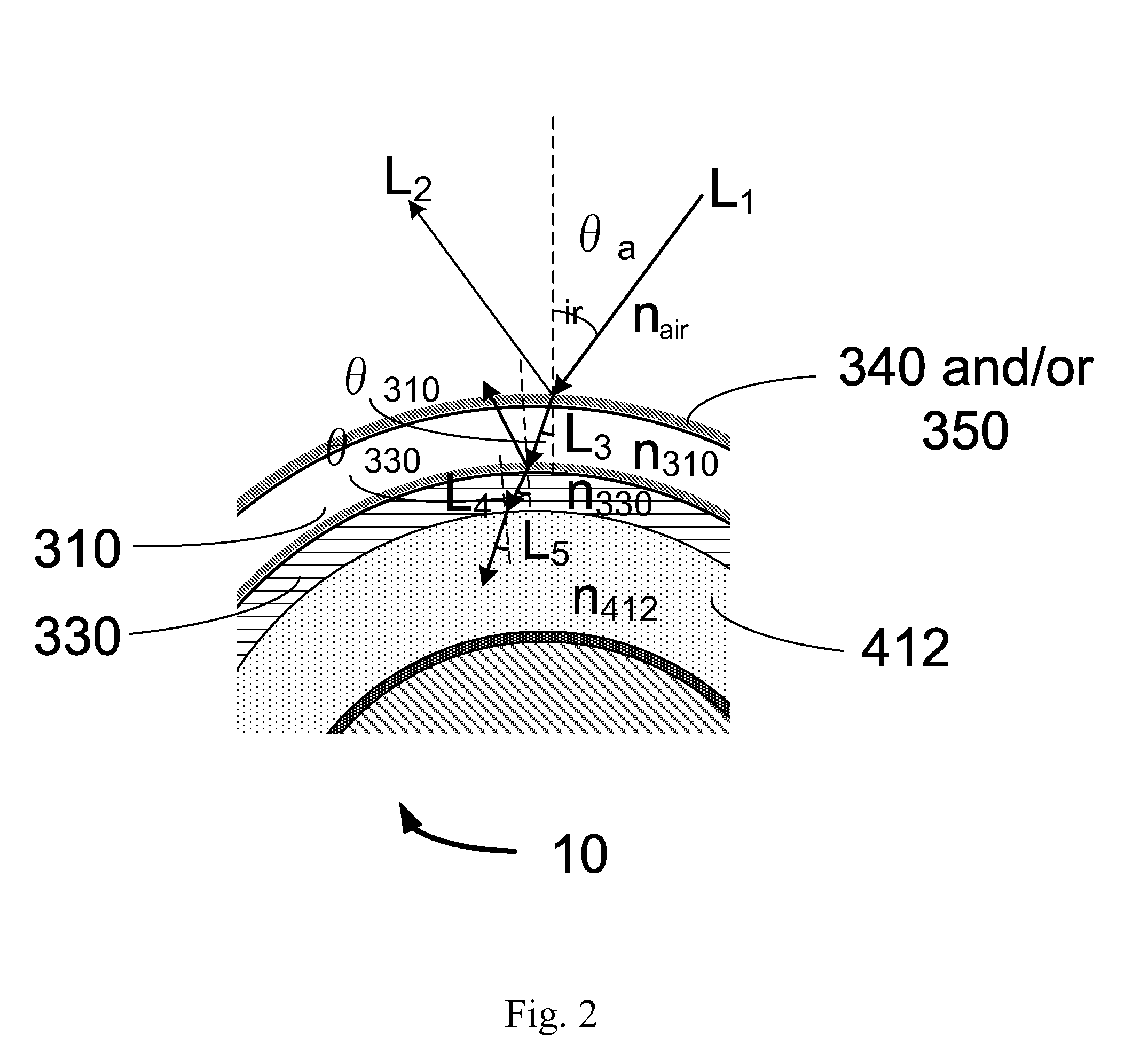Photovoltaic Modules Having a Filling Material
a photovoltaic module and filling material technology, applied in the field of photovoltaic module construction and photovoltaic module, can solve the problems of shunting across the junction, pinholes and similar flaws affecting the occurrence of large planar solar cells, etc., and achieve the effect of maximizing the amount of light incident and reducing the amount of reflection
- Summary
- Abstract
- Description
- Claims
- Application Information
AI Technical Summary
Benefits of technology
Problems solved by technology
Method used
Image
Examples
Embodiment Construction
[0053]A photovoltaic module having an elongated substrate is provided. A portion of the elongated substrate is rigid. One or more solar cells are disposed on the elongated substrate. The one or more solar cells each comprise (i) a back-electrode disposed on the elongated substrate, (ii) a semiconductor junction layer disposed on the back-electrode, (iii) and a transparent conductive layer disposed on the semiconductor junction, where the transparent conductive layer has a first refractive index. A filler material is disposed on the transparent conductive layer. The filler material has a second refractive index that is smaller or equal in value to said first refractive index. A transparent casing is disposed on the filler material thereby sealing the photovoltaic module. In some embodiments, the transparent casing has a third refractive index that is smaller or equal in value to the second refractive index. In some embodiments, the transparent casing has a third refractive index that...
PUM
 Login to View More
Login to View More Abstract
Description
Claims
Application Information
 Login to View More
Login to View More - R&D
- Intellectual Property
- Life Sciences
- Materials
- Tech Scout
- Unparalleled Data Quality
- Higher Quality Content
- 60% Fewer Hallucinations
Browse by: Latest US Patents, China's latest patents, Technical Efficacy Thesaurus, Application Domain, Technology Topic, Popular Technical Reports.
© 2025 PatSnap. All rights reserved.Legal|Privacy policy|Modern Slavery Act Transparency Statement|Sitemap|About US| Contact US: help@patsnap.com



